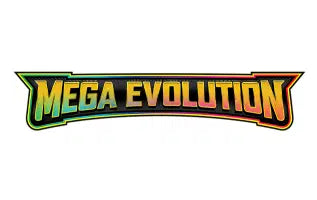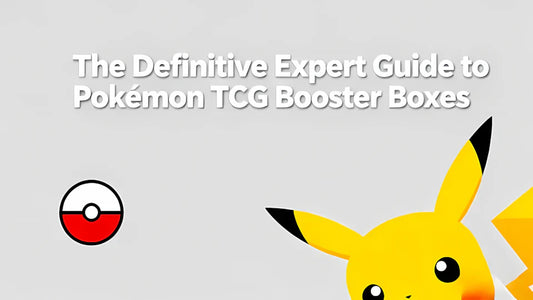The Definitive Analysis: Sleeved vs Standard TCG Booster Packs
Executive Summary: Packaging, Not Contents, Dictates Value
For collectors and investors, the fundamental difference between a sleeved booster and a standard (loose) booster lies in packaging and distribution — not the cards inside. Each sleeved pack contains the same cards at the same odds as a loose pack. The cardboard hanger (sleeve) around a booster pack helps retailers display product but more importantly protects the foil pack. This protection translates into a small but consistent resale premium for sleeved packs. By contrast, loose packs (often broken out of boxes or tins) are cheaper and store very efficiently, but they carry extra risk if not sourced carefully. Crucially, retail sleeved packs are packed and shipped singly, so a buyer can trust the odds are truly random (i.e. not drawn from an “eaten” box of known pulls). In short: sleeved packs maximize condition and buyer confidence, while loose packs maximize quantity per cost and storage space.
Product Definitions
Standard (Loose) Booster Pack
A standard booster pack is the thin foil envelope containing ~10–11 cards, straight from a factory-sealed Booster Box or collection tin. Collectors often buy loose packs by breaking open sealed Booster Boxes or Elite Trainer Boxes. These loose foil packs are authentic and valuable, but extremely delicate. Even slight pressure can crease, wrinkle, or tear them if they aren’t immediately protected in a rigid holder. (As RareCards observes, without the sleeve “wrinkling, folding or tearing” happens quickly.)
For example, CardDogTCG explains that loose packs are “obtained by breaking down collection boxes, Elite Trainer Boxes (ETBs), tins, and sometimes booster boxes,” and if bought from a reputable seller they are “just as authentic and valuable” as sleeved packs. But because loose packs lack any hard exterior, collectors aiming for mint condition must use secondary protection (like acrylic cases or toploaders) as soon as possible.
Sleeved (Hanger) Booster Pack
A sleeved booster pack (often called a hanger pack) is the identical foil pack enclosed in an extra cardboard sleeve. The sleeve usually has a perforated tab so it can hang on retail display pegs. Its primary purpose is merchandising: it lets big-box stores and convenience shops display single packs. Equally important, the sleeve offers real protection. The cardboard absorbs impacts and friction, preventing the pack inside from bending or scratching. RareCards notes that in busy retail environments “the cardboard sleeve really makes a difference” at preventing damage. In practice, this means a sleeved pack left on a shelf or shipped by mail is far more likely to arrive looking flawless.
Example of sleeved Pokémon booster packs on retail hangers. The cardboard sleeves protect the inner foil packs from handling damage.
Distribution Channels and Collation
The origin of a pack greatly affects buyer confidence. Hobby shops and serious collectors usually buy sealed Booster Boxes (36 packs each) at wholesale, which are manufactured with a fixed collation. This means the factory guarantees a certain number of rare or special cards per box. By contrast, retail sleeved packs are packed and shipped individually via the mass-market channel.
Because sleeved packs never come from an open box, they are not subject to a box’s fixed 36-pack pattern. In practical terms, a collector buying a sleeved single pack can be sure they aren’t getting the tail end of a box that’s already had its hits removed. RareCards explicitly recommends sleeved packs when not buying a full box: “loose boosters from an open booster box have sometimes already been viewed or purchased by others, whereby the good pulls may have already been removed”. In contrast, unopened Booster Box packs are guaranteed statistically fair if the box is truly fresh and untampered.
Key Point: All pack formats officially share the same pull odds, but because sleeved packs bypass the fixed-box algorithm, many buyers feel they get “as random as possible” a draw.
Integrity Risks: Weighing and Tampering
Pack Weighing (Modern): Older TCG packs could sometimes be weighed to find holo cards, but today’s products have largely eliminated that. CardDogTCG reports it is now “extremely difficult to weigh modern booster packs to determine if there is a ‘hit’”. Changes like balanced code-card weights and uniform materials have mostly neutralized weight-based sniffing. In short, weighing is a negligible concern for both sleeved and loose packs in the current market.
Resealing/Tampering: Fraudsters may try to open a foil pack (slit a seam or cut off the bottom), swap cards, and glue it shut. Signs of this include uneven seams, excessive glue, or heat damage at the seals. Sleeved packs paradoxically can make this harder to detect: someone can carefully open the cardboard, reseal the foil pack fraudulently inside, then close the sleeve, hiding evidence. Therefore, verifying a pack’s integrity ideally requires breaking the sleeve and inspecting the foil pack’s factory heat seals. (Many collectors learn to check if the foil pack’s back-flap is overly tight or loose, but expertise is required.) No source quantifies this, but it is widely acknowledged: sleeves protect condition but can conceal tampering.
Source Trust: Buying from a reputable retailer or seller is crucial. CardDogTCG reassures that loose packs from trusted sources are “just as authentic and valuable as sleeved ones”, but emphasizes the need to buy sealed boxes or well-regarded resellers to avoid scams.
Comparative Risk Factors
Exterior Damage: Loose packs (from opened boxes) are highly vulnerable to bends or tears. Sleeved packs are at low risk thanks to the cardboard shield.
Pack Weighing (Modern): Both loose and sleeved packs are equally safe (weight differentials are now negligible).
Resealing Detection: Loose packs can reveal a bad reseal with careful inspection of the foil; sleeved packs can hide a reseal beneath the cardboard, making fraud harder to spot.
“Pack-Eating” Bias: Loose packs from a broken Booster Box have high risk of having had the best cards removed first. Sleeved retail packs have low risk since each pack is independent.
In practice, collectors often summarize: sleeved packs give better condition protection, while loose packs must be sourced and stored carefully to mitigate physical and fraud risks.
Collation and Pull Rates
All sources (and official statements) agree that sleeved vs. loose packs have identical pull rates. RareCards points out that “the Pokémon Company says that the chance of pulls is the same for both options. Sleeved boosters and loose boosters should have the same hit rate.”. In theory, a random single sleeved pack and a random loose pack are the same card universe.
That said, collectors note a psychological difference: in a sealed Booster Box the odds are forced to spread evenly (you won’t get two Ultra Rares in back-to-back packs if only one is guaranteed). Sleeved packs, coming off an independent assembly line, can by chance give multiple hits in succession — an outcome impossible under fixed-box collation. RareCards acknowledges this nuance: “sleeved boosters can sometimes provide a few more surprises… because sleeved boosters are randomly packed, while booster boxes have a fixed distribution.”. Ultimately, whether one format feels luckier is just chance.
Takeaway: Some players prefer sleeved packs for small purchases because they feel fair (no worry of an “eaten box” pattern), even though the official odds are the same.
Investment Considerations
Sealed-product investors look at condition, liquidity, cost, and space.
Condition Retention: Sleeved packs inherently stay near-mint. The sturdy sleeve “prevents the packs from wrinkling, folding or tearing”. This results in a higher resale value per pack. Collectors regularly pay extra for a perfectly sleeved pack over an identical loose pack. Conversely, a loose pack (especially if stored improperly) can degrade, losing value unless immediately encased.
Cost per Pack: Loose packs (from box breaks) are cheapest per pack, since the price of a broken box is spread over many packs. Sleeved packs sell at MSRP per pack. A sealed Booster Box is the lowest per-pack cost of all, but it requires much more upfront capital. (For example, 36 loose packs from a box might average $3–4 each, a sleeved pack might retail for $5–7, and a box might work out to ~$2–$3 per pack if bought at bulk pricing.)
Storage Density: A dense stack of loose foil packs uses far less space and weight than the same number of sleeved packs (which include bulky cardboard). If you store hundreds of packs, loose packs vastly reduce your warehousing costs. Sleeved packs consume much more volume and are heavier, so bulk investors will pay ongoing storage and shipping premiums for those sleeves.
Resale Premium: Since sleeves assure condition, loose packs typically sell for roughly the same as printed value if graded or sealed, whereas sleeved packs often earn a consistent premium. RareCards confirms that buyers “are often willing to pay a little more for a pack in perfect condition with the original sleeve around it”. By contrast, loose packs must be resealed or graded to command top dollar, if at all.
Liquidity: Single sleeved packs are easy to sell to many buyers (hobbyists, casual collectors, children with pocket money). They are very liquid per pack. Loose packs (even sealed) depend more on trust; many buyers insist on video proof or reputable dealer verification before buying a loose pack. A full Booster Box is less liquid by count (it’s one item requiring one rich buyer), but in volume it can move quickly within the professional market.
Practical Recommendations
For Openers (Players): If you’re buying just a few packs to open for cards or fun, consider sleeved packs from a reputable retailer. You’ll pay slightly more, but you avoid the risk of accidentally buying an “eaten” box’s leftover. However, if you plan to open an entire set of packs (e.g. 36 packs), a sealed Booster Box is more cost-effective and guarantees the full hit distributionr. In all cases, inspect the foil pack seals before purchase: look for clean, factory heat seals and no excessive glue or creases. The cardboard sleeve’s condition is not a reliable indicator of the foil pack’s integrity.
For Collectors/Investors: To maximize long-term value, favor sleeved booster packs for your sealed inventory. The built-in sleeve means each pack stays near-mint, letting you command a premium on resale. Sleeved packs also attract more potential buyers at sale time. If you do buy loose packs for investment (often to save space or cost), immediately place them in rigid cases or have them professionally graded. Always source loose packs from highly trusted sellers who can prove their origin. (Recently, some companies even offer third-party authentication of single loose packs to address tampering fears.)
Conclusion: Strategy Matters More than Cardbacks
Ultimately, sleeved vs. loose is a strategic choice, not a change in card content. A sleeved booster acts as a hybrid asset: it meets retailers’ display needs, appeases small-buying collectors with independent randomness, and satisfies investors’ desire for condition security. Loose packs, by contrast, are a commodity form: they have all the same cards but trade at a discount because you must manage their vulnerabilities yourself.
In practical terms, if you want an investment that is verifiably mint and easy to resell one pack at a time, go with sleeved packs. If you want to maximize your card count per dollar and can provide airtight storage and sourcing, loose packs offer density that sleeved packs cannot match. The sealed Booster Box remains the benchmark for bulk buying—no retailer sleeve, but full collation guarantee and lowest per-card cost.
No matter which format you choose, remember: the only guaranteed way to know what’s inside is to open it. Until then, trust in proven supply chains and condition-preserving packaging to protect your investment







